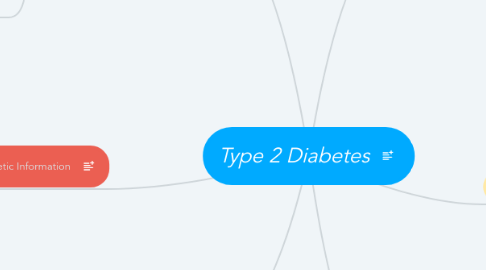Type 2 Diabetes
par Timothy Neubauer


1. Pathophysiology
1.1. Obesity
1.1.1. PPAR-y is expressed in adipose cells and modulates changes in adipokines
1.1.1.1. Affects pancreatic function
1.1.2. Increase levels of free fatty acids
1.1.2.1. Metabolic Overload
1.1.2.1.1. Decrease tissue response to insulin
1.1.3. Inflammatory cytokines released from intra-abdominal adipocytes
1.1.3.1. Insulin resistance
1.1.3.1.1. Increased Blood glucose
1.1.4. Hyperinsulinemia as a compensatory mechanism
1.1.4.1. Can mask appearance of diabetes
1.2. Pancreatic alpha cells less responsive to glucose levels
1.2.1. Increased glucagon secretion
1.2.1.1. Increased production of glucose from liver
1.3. Beta-cell dysfunction due to increased levels of glucose and fatty acids
1.3.1. Decreased insulin production
1.3.1.1. Increased Blood glucose
2. Genetic Information
2.1. Sibling recurrence risk 10-15%
2.2. TCF7L2 - associated with 50% increased risk
2.3. PPAR-y - 25% increased risk, but found in 75% European descent
2.4. KCNJ11 - 20% increase susceptability
3. Treatments
3.1. Oral hypoglycemic agents
3.2. Diet modification
3.3. Exercise
4. Risk Factors
4.1. Positive family history
4.2. Obesity
4.2.1. Increases insulin resistance
4.3. Age
4.4. Physical Inactivity
4.5. Hypertension
5. Clinical Presentation
5.1. Overweight
5.2. Hyperinsulinemia
5.3. Polyuria
5.4. Polydipsia
5.5. Visual changes
5.6. Neuropathy
5.7. Associated Diseases
5.7.1. Coronary artery disease
5.7.2. Peripheral arterial disease
5.7.3. Cerebrovascular disease

